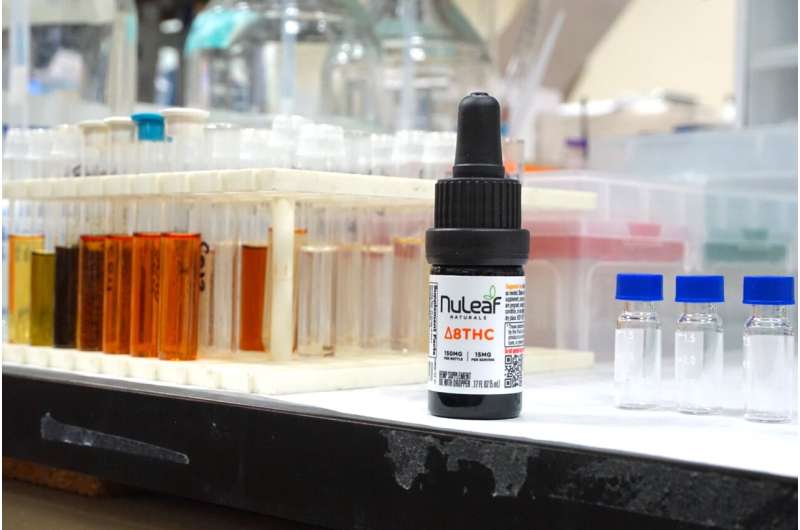This article has been reviewed according to Science X's editorial process and policies. Editors have highlighted the following attributes while ensuring the content's credibility:
fact-checked
peer-reviewed publication
trusted source
proofread
New interactive evidence-based mapping tool gives policymakers more insight into highly concentrated cannabis products

After conducting the first scoping review of its kind, researchers at the University of Colorado Anschutz Medical Campus have developed an evidence based interactive mapping tool to assist policymakers as they consider regulating the concentration of THC in cannabis products and as more potent products move into the marketplace.
Their review was released in the American Journal of Public Health.
"We looked at studies that measured adverse or beneficial effects of high concentration cannabis products. From that, we were able to produce an open access, interactive map of the evidence so that anyone looking for research on it can find what is available," said Lisa Bero, Ph.D., chief scientist for the Center for Bioethics and Humanities and research professor for the Colorado School of Public Health. "During the review we also discovered that research on cannabis is out of sync with the higher concentrations found in today's products."
The review notes that while smoking cannabis has been declining, routes of administration that use higher-concentration THC, such as vaping and dabbing, have been increasing, as well as the THC concentration of smoked products.
As of February 2023, 37 states allowed medical cannabis, and 19 states had legalized recreational cannabis, providing access to these more potent products. Several states have begun to regulate the amount of THC in them due to the risk of harmful effects, but lawmakers have been eager for more accurate and easily accessible data to write appropriate legislation.
"Our map is a public health good that can be used to find the studies that have been done on high concentration cannabis products. For example, they could look for all studies that have been conducted on mental health outcomes," Bero said.
The map includes 452 studies that meets three criteria: studies involving humans; highly concentrated cannabis exposure; and any health outcomes regardless of whether they were classified as beneficial or adverse.
"While many of these studies need to be expanded to keep up with current trends, it opens up a conversation that could lead to broader research and collaboration between medical experts and state governments as well as close the knowledge gaps about these products," Bero said.
More information: American Journal of Public Health (2023). dx.doi.org/10.2105/AJPH.2023.307414

















